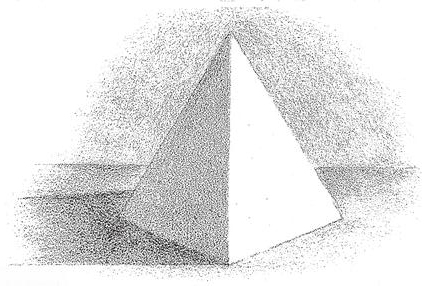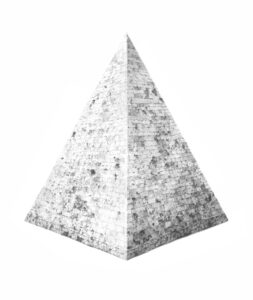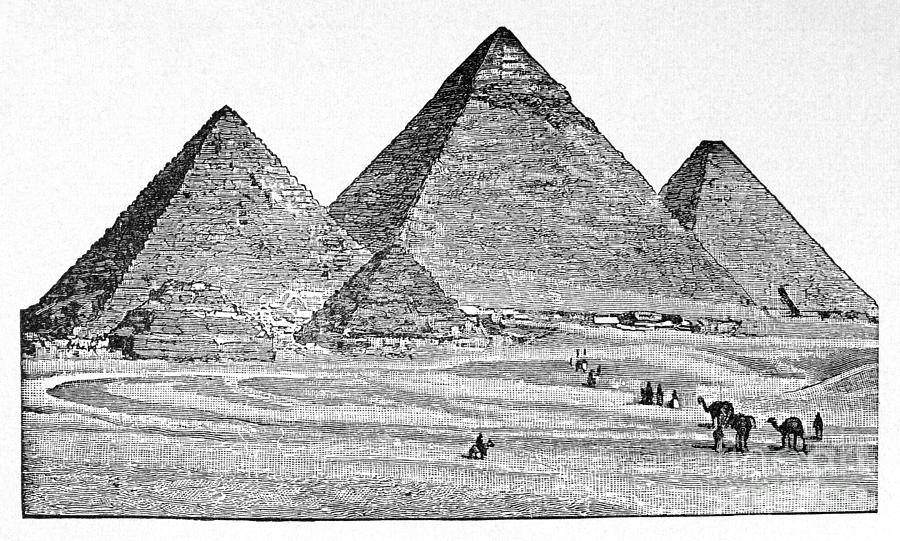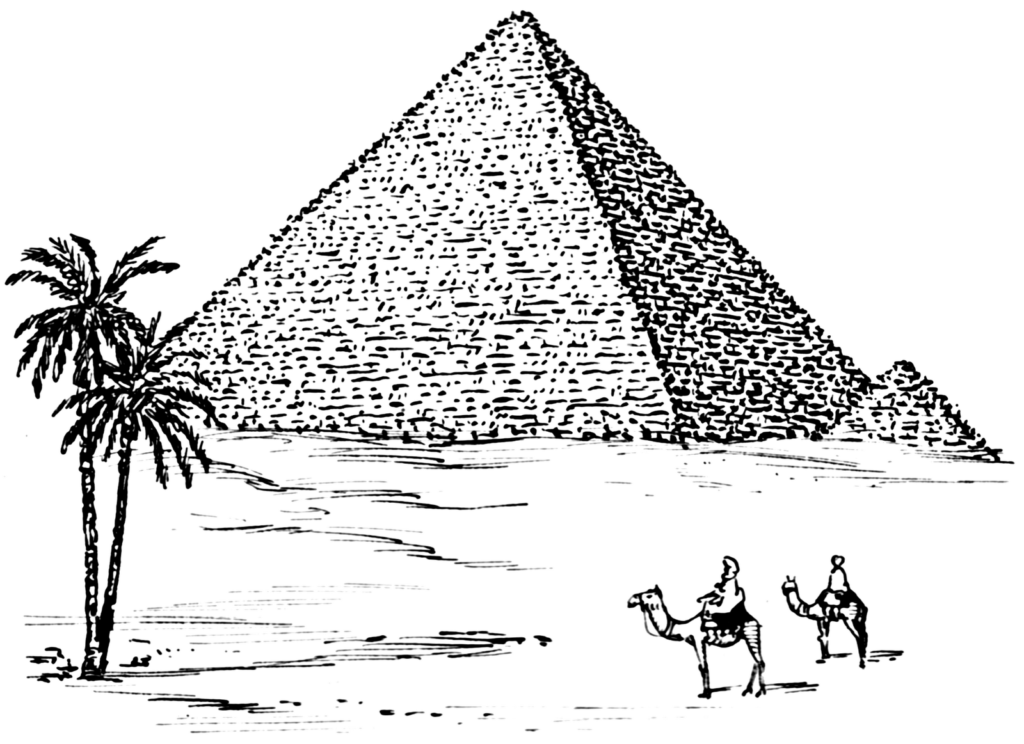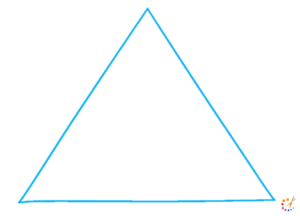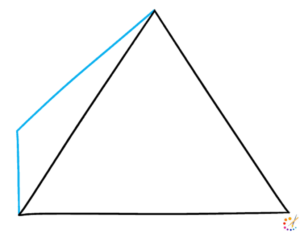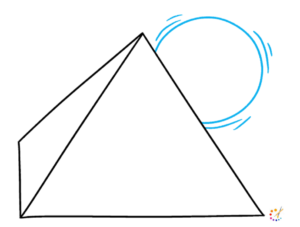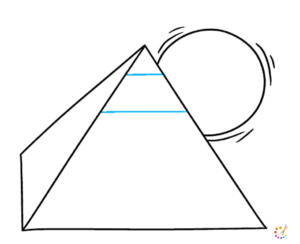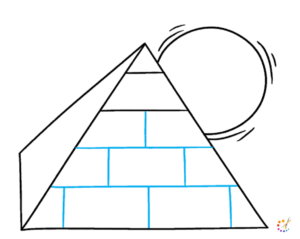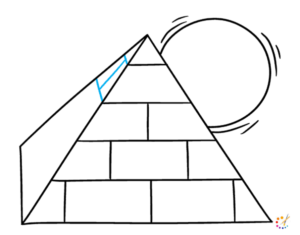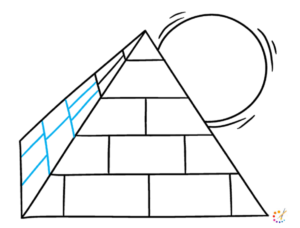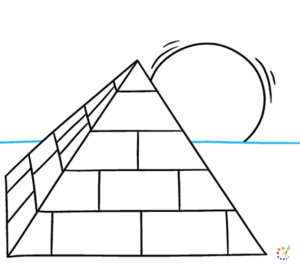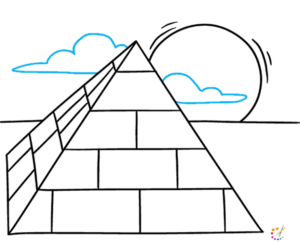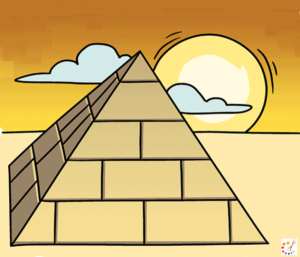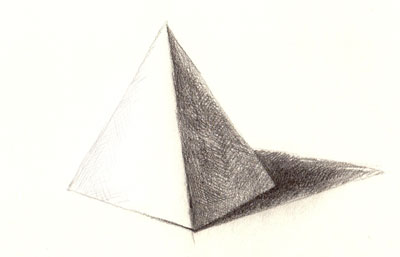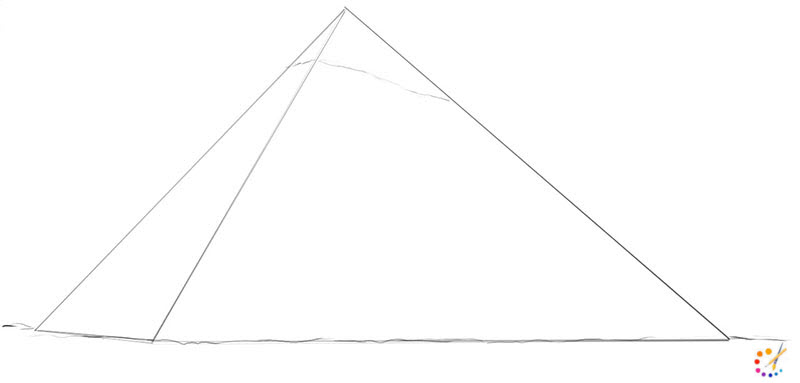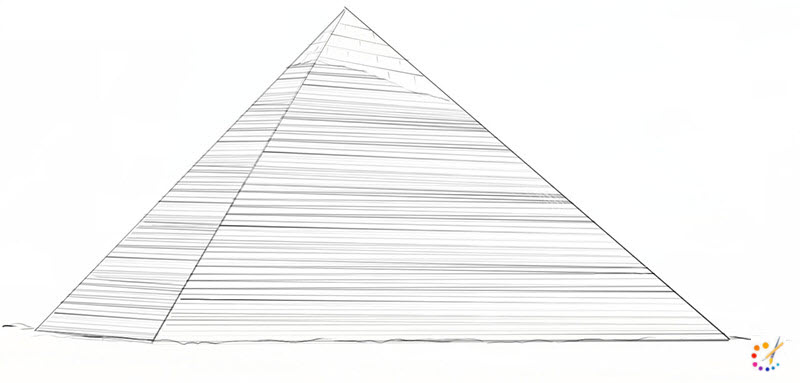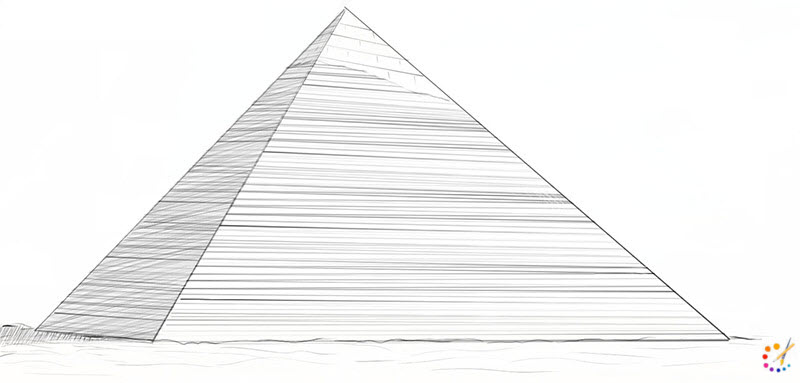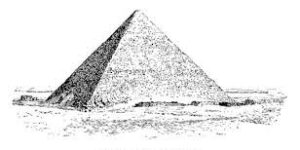This tutorial is on how to draw a Pyramid, an ancient monument, for children and beginners. Egypt’s pyramids are globally renowned situated along the Nile River.
Most of the civilizations on earth like Mesopotamia, Egypt, Sudan, Nigeria, Greece, Spain, China have pyramids. They all have different types of pyramids but they are large in size on the ground and get smaller at the top as going up. There are few pyramids that are steps, going up in a triangular shape.
In this tutorial, there is a pyramid landscape and a pencil drawing of the pyramid step by step shown below. Get out your paper, pencil, and start your Pyramid drawing. Also, learn how to draw a beach, how to draw a mountain.
How to Draw a Pyramid Landscape
Step 1: Draw an equilateral triangle with all equal sides to represent the front side of the pyramid.
Step 2: In order to make the 3d effect for the pyramid, draw another equilateral triangle by the side of the first equilateral triangle.
Step 3: Draw a circle partially invisible from the pyramid representing the sun, add a few random lines around it representing the heat.
Step 4: Draw a straight line across the top of the pyramid, this will represent the layers.
Step 5: Keep drawing some more horizontal lines throughout the front section of the pyramid, then draw vertical lines between the horizontal lines.
Step 6: Draw diagonal and straight-line matching with the front section of the pyramid, draw the same pattern of bricks.
Step 7: Keep drawing horizontal and vertical lines until the end of the pyramid.
Step 8: At the back of the pyramid draw a horizon line extending from the sun. Remove the lower portion of the sun to give it an inclination in the horizon refer to the below-provided illustration.
Step 9: Mark clouds in the sky similar to what we did in the given below picture.
Step 10: Color your drawing accordingly, mark different shades of color for it.
How to Draw a Pyramid
Step 1: Sketch a pyramid with an irregularly shaped triangle using a ruler. You may do it without a ruler also, since I always encourage you to use fewer tools. This base structure will serve as your drawing’s base.
Step 2: Sketch a lateral surface for the pyramid by sketching another triangle using 2 easy lines.
Step 3: The pyramids are plastered and over time it collapsed, on this step we will draw the remaining pieces of the plaster. For this draw, an angled wavy line on the pyramid top and at the bottom also draw a horizon line.
Step 4: Here draw brick on the top and in the remaining areas draw the random straight textured lines. Look at the image provided for your reference.
Step 5: Drawing is finished until this step but you can provide more definition and volume to the pyramid, do it with the method of hatching and shading. Also, don’t forget the horizon, complete it with sand and shadows of the drawing.
Facts you should know Pyramids of Egypt:
- Pyramids are a geometric shape and they can be a trilateral, quadrilateral, or any polygon shape.
- Pyramids are located in Egypt just close to the city Giza, hence they are referred to as Pyramids of Giza
- They were constructed during the reign of King Tut.
- The Great Pyramid of Giza stands at a height of approximately $81 feet.
- It took 2.5 million stone blocks to cut, transport, and place in order to construct a pyramid,

Skilled teacher, knowledgeable in and in adapting state content standards to individual needs in
Elementary-6th grade classrooms. Utilizes instructional materials, technology, and teaching methods to
engage students in effective learning opportunities in individual, small group, and whole-group settings to
maximize instructional time. Differentiates instruction for ELLs while exposing them to rigorous content,
with a focus on literacy skills in all subject areas. Establishes and maintains appropriate standards of
behavior in an inclusive and respectful environment for students from all socio-economic and cultural
backgrounds. Develops lesson plans using Backwards Planning Method to align content standards and
assessments with effective learning activities. Communicates and collaborates effectively with staff and
parents, and creates a safe and positive learning environment for students. Has taught in both in-person
and virtual environments. Professional Communicator with 20+ years of experience.

